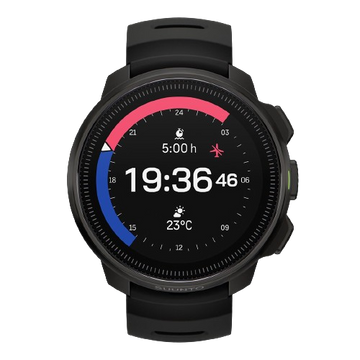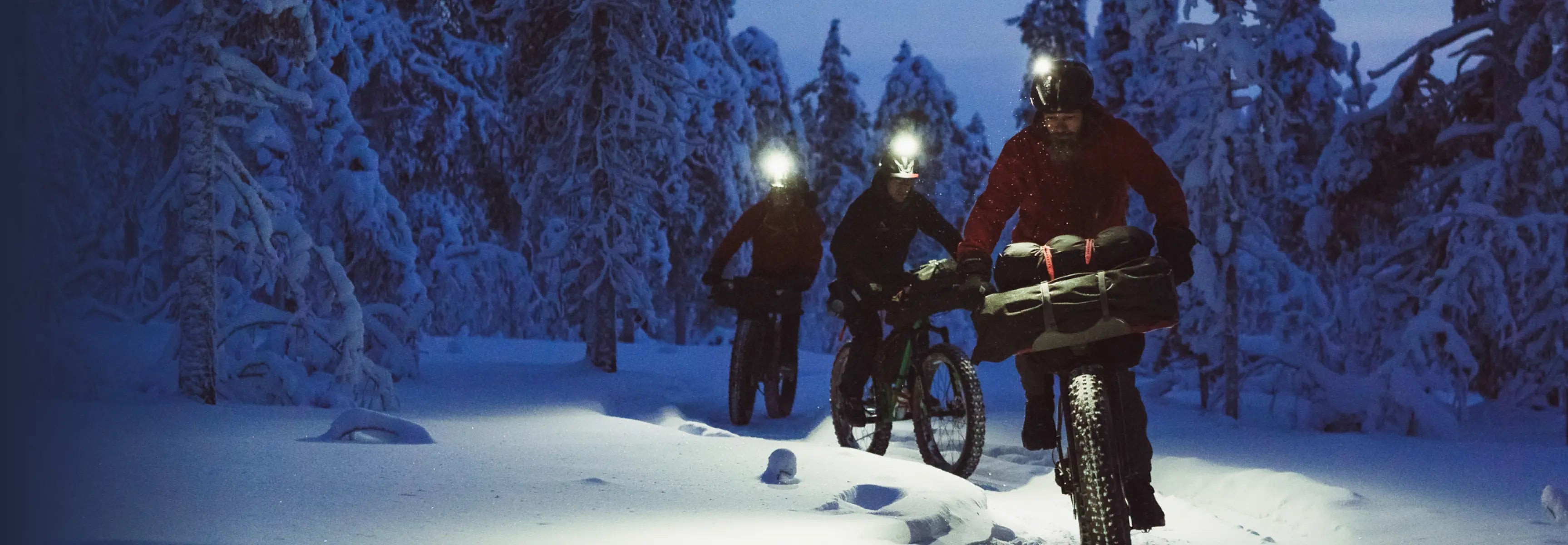
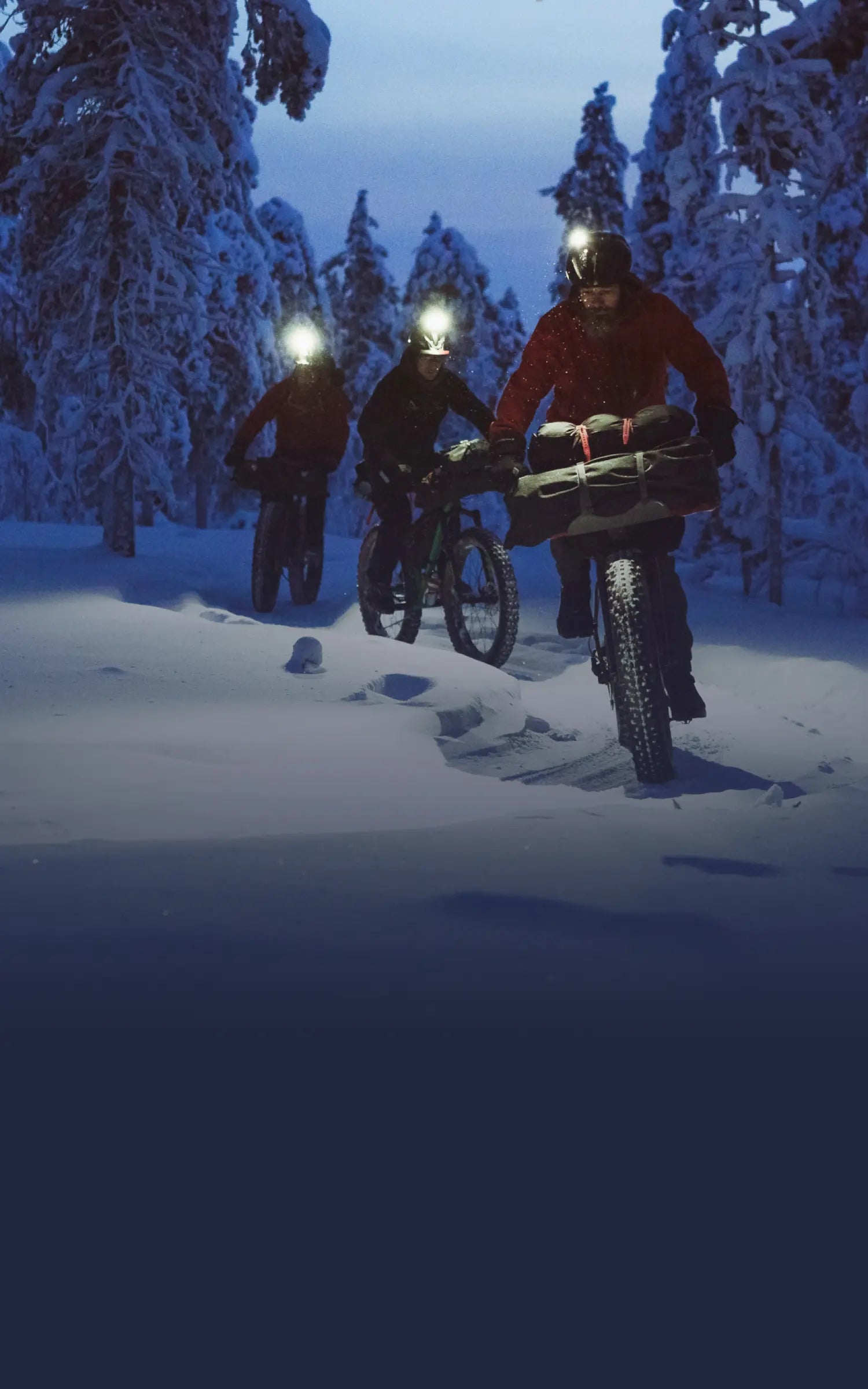
SUUNTOブログ
KIMBERLY, DAVID AND KYLE ARE THE VERTICAL WEEK PHOTO CONTEST WINNERS!
World Vertical Week was held last week and the hundreds of pictures tagged with #VerticalWeek give a wonderful look at what people were up to during the event. Thank you very much for participating and sharing the photos, everyone!
The three lucky photo contest winners are Kyle Conway, David Jeker and Kimberly Strom. Congratulations! They all will receive Suunto Ambit3 Vertical GPS watches for their inspiring images.
putting in some more hard miles before #gorge100k @briehemingway @ultracrazychris #teamultracrazy #trailfamily #trailrunning #trailporn #training #suuntoverticalcanada #verticalweek #epictrailrunning #teamtransalpine
A photo posted by Kyle Conway (@kc_lumberguy) on Feb 20, 2016 at 11:08pm PST
Kyle Conway shot his winning photo at his local Baden Powell Trail in North Vancouver, Canada.
“We ran about 30 km with about 1250 m of climbing, including two loops of the "Seymour Grind", a popular "climbing route" for trail runners,” Kyle tells about the day the photo was taken.
Over the Vertical Week Kyle climbed 4700 m.
“2016 has been a year with goals of improving my climbing, and Suunto's Vertical Week was a perfect opportunity to step things up.”
Dream big. #trailrunning #catogne #trailvsb #whatanadventure #waaultra #waateam #verticalweek #livingthedream #jesuisloup
A photo posted by David Jeker (@davidjeker) on Feb 17, 2016 at 8:11am PST
David Jeker used the Vertical Week as his last week of hard training before tapering for Transgrancanaria in early March.
“I ran nine times during the week, always near my place in Salvan, Switzerland. I kept the best training for the end and did some hill repeats on a very steep trail on Sunday. I ran up and down five times for a total of 2300 meters. Totals for the week were 122 km with 4350 meters of ascent.”
David’s photo was taken during a 33 km long run with 1350 meters of ascent.
“I had originally planned on doing an easy run down in the valley but when I saw that the snow had mostly melted higher up, I changed my plan. It was Vertical Week after all! I ran up to one of my favorite trails and took a picture of Catogne,” David says.
“I’m running a race (X-Alpine / Trail Verbier St-Bernard) this summer that goes up, down and around that mountain. Since I’ve registered for that race, the sight of this impressive mountain is always a great source of motivation!”
Finished the week with a big day, +2400m and plenty of sun. #verticalweek #suuntoski
A photo posted by @kimberly.strom on Feb 21, 2016 at 10:38pm PST
Kimberly Strom’s Vertical Week was a true multisport one: she ran in the Jura mountains, nordic skied, and had a big skimo day in the French Alps gaining a total ascent of about 5000 m for the week.
In Kimberly’s photo her friend Noémie leads their climb to Col de l'Encrenaz on the way to Mont Buet (3096 m), in the French Alps.
“The route allowed us a quiet morning, away from the busy ascent of Buet. With some extra skinning we earned the chance to be alone at the summit, arriving late in the afternoon after two long climbs (1300 m and 1100 m).”
Along the way they saw many small avalanches as the sun heated the snow, watched a huge ibex perched on an impossible ledge, took a break to sit protected from the wind and enjoyed the view, kick-turned up icy slopes, and struggled to break through the crusty, crème brûlée descent. When they arrived back at the bottom the towering peaks glowed pink.
“I can't think of a better day than spending all of it with friends in the mountains: working hard, feeling sun and wind burn, rewarded constantly with beauty, feeling accomplishment and the desire to go again.”
Kimberly uses Suunto Ambit3 Sport to track her moves.
“I never leave home without it. Track-back feature helps me find my way after some exploring!”
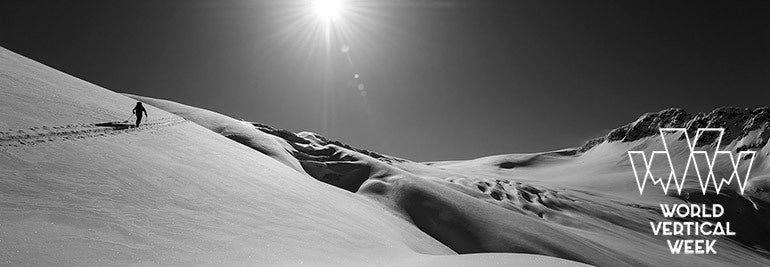
Win a Suunto Ambit3 Vertical in World Vertical Week’s photo contest
World Vertical Week started today! Share a photo showing your World Vertical Week spirit on Instagram or Facebook between February 15–21, 2016 and tag the photo with #VerticalWeek for a chance to win a Suunto Ambit3 Vertical watch.
The three most inspiring photos will be chosen as winners.
During World Vertical Week every move will add to your country’s totals and soon we’ll find out where in the world people push uphill the most. Track your adventures with your Suunto watch. Every move and every sport counts.
The only thing you need to do to participate in the event is to make sure your country information in the settings is correct. After that your ascent will automatically be calculated in your home country’s total figure.
By the end of the week we’ll find out where in the world the real climbers live and can compare different sports, too. Have fun!
Read the terms and conditions of the photo contest

Meet the orienteer who runs a 2h18m marathon
Thought orienteering was a strange fringe sport for runners who like map reading? Think again! The guys competing at the top are phenomenal athletes. Suunto ambassador Mårten Boström is one of them. We asked him how he does it – and why he loves a good map, especially if it’s upside down.
What’s your training involve? Whenever I'm healthy I am running around 140-170 km per week, but since my sport is not only about running, I do many other forms of training too. At the moment it adds up to 20 hours a week.
Time in the gym?I am just in the midst of a speed strength period where I go to the gym for short and fast series of squats, one leg squats and calf-lifts. Towards the end of the period I transfer the gained power to running through jumps and 7x7 second hill sprints.
How did you get into orienteering?My older siblings were practicing the sport so I followed their example at a young age and remember my first race at the age of five.
What is the appeal? The dual-task to manage finding the best route through unknown terrain while you put your body under hard physical stress.
Is it more important to be a great athlete or great navigator? The challenge is to stay focused in navigating while running as fast as you can, so both are important. Nowadays maps are so good at elite events that any small mistake in navigation will likely put you outside the podium.
And you need to be good at math right? It's continuous thinking until the finish line.
Your bio says you like making maps?
Mapmaking is both professional and fun. I'm pursuing a PhD in Geographical Information Science at the University of Helsinki, where I research methods of using LiDAR data (laser technology) for mapmaking, but I have also drawn various maps around the world. The best situation is when I can combine running and work, which I have recently done in Taita Hills, Kenya.
Why is navigating with a map and compass better than GPS? There is a place for both! Generally a GPS would show you the shortest way pointing you towards a POI, (point of interest) but with a map and compass I can find the fastest way. I do however also use GPX tracks guiding me on trail runs whenever out in unknown terrain, such as on remote islands in Thailand.
Have you always loved maps?Maps are works of art! As a kid I used to admire maps depicting far-flung places and draw fantasy maps of my own, so yes, I have always loved maps. When one learns how to read a map it's like learning a new language – and a new world of possibilities open up.
Do you have a favorite? I like maps which depict things other than purely geographical themes, like bulging countries to represent population, rather than land mass. My favorite map however would have to be "the Upside Down World Map" which challenges the cartographic rule of always having north up and Europe in the center.
Can you give x3 tips to be a better map reader? 1) Study maps of different parts of the world2) Imagine what the terrain looks like, by creating a 3D image in your mind3) Keep your thumb pointing to your location on the map always moving it along as you run further.
What are your goals for 2016?I’m aiming at reclaiming the gold at the World Champs at the sprint distance in orienteering.
MAIN IMAGE: © Matleena Boström

Meeting Nepalese trail runner Mira Rai
Meet the former Maoist child soldier turned trail runner who is blazing a trail for Nepalese women.
© Martina ValmassoiYou can be forgiven if you haven’t heard of Mira Rai. But the young Nepalese trail runner is fast making a big impression after turning up on European soil. In June last year she won the Mt Blanc 80 km, 20 minutes ahead of her nearest rival and came second, just four minutes behind Emelie Forsberg, at the 100 km Ultra Pireneu in the Pyrenees last September. Hers is a remarkable story: she grew up in small village with just three families living on top of a hill, escaped aged 14 to join the Maoists and trained as a soldier. Always competitive, she later took up running, was talent-spotted in Kathmandu and switched to trail running, winning her first race, a 50 k, in March 2014 wearing a $4 pair of shoes. During the race, she stopped once to borrow 50 rupees to buy noodles and a carton of orange juice.
© Richard BullIt was tough growing up, she says, but also rewarding. “From a young age I carried water and collected fodder for the animals, and later I did a lot of work carrying heavy bags of rice to the market. It was hard, but now I know it made a difference for me.” It may seem surprising but she volunteered for the Maoists for the opportunities they afforded. “I joined for different reasons,” she says. “We certainly had financial difficulties in home, I wanted an opportunity to learn new things, and I wanted a chance to prove that women can be equal to men. Maoists respected women soldiers also.” Her manager Richard Bull, who arranged for her to compete in Europe, takes up the story. “Mira has told me that it was a choice between being stuck in the village doing the hard work required to keep life going, or taking a chance and seeing where it would lead. It’s a tough life in the village, and especially tough for girls as they are ultimately the workers.”
© Martina ValmassoiBeing competitive is in her blood though. “She and her friends would compete at the daily household chores, like who could cut grass for the animals quicker, who could carry the bigger load or reach the destination faster,” says Bull. Her good fortune was to join the Maoists as Nepal’s 10 year civil was ending and she never saw combat. “We did a lot of training in different sports, and different exercises, drills and skills to be fit. It was also a chance to compete against others in sports which I enjoyed a lot.” Her big opportunity came years later after her Maoist sports coach Dhruba Bikram Malla heard she was thinking of moving to Malaysia to work in a factory. He invited her to Kathmandu to try to run seriously. However, mountain running was unheard of. “Athletics organisations in Nepal focus on track up to marathon distance - IAAF recognised distances,” adds Bull. “The coaches dislike trail running as ‘it makes runners slow’. So all focus is on the track and marathon. In Kathmandu in her early 20s, she was trying for any event that came up – 10 km, 15 km etc.”
And that’s when she had a chance encounter with some runners who invited her to the 50k race that she won. “A week afterwards I met her,” adds Bull. “I told her about this sport and asked if she would like to try it. She looked a little bit incredulous, as if she thought ‘hilly up down running’ as she called it was a ridiculous idea. But slowly she came around to the idea that her potential was not on the track and she could try ‘hilly up down running’.” It’s safe to say there’s now no turning back for the athlete. “My goal is to run for a few years, to run really hard and do the best I can,” adds Rai, “then to help more Mira Rais to run, and to try and support them as best I can!”
Nepal is struggling to recover from a devastating earthquake that struck in 2015. To support the recovery, Suunto created the Ambit3 Nepal Variant. With every watch sold, Suunto will donate €25 to the Nepal earthquake rehabilitation operation. More here.
MAIN IMAGE: Lloyd Belcher
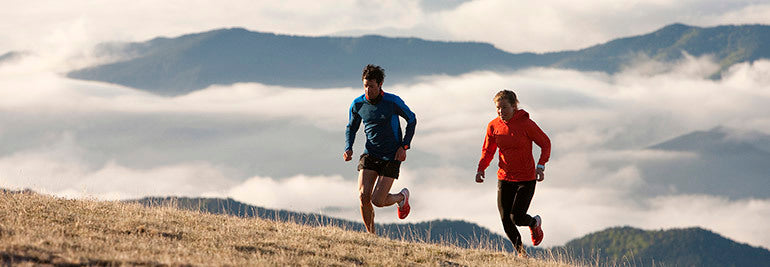
Performing your best with vertical speed
The new Suunto Ambit3 Vertical was designed for athletes who travel light and fast up tough ascents. Here’s how the watch’s vertical speed mode can help you rise to the top!
While road runners focus on pace – minutes per km or mile – mountain athletes like champion trail runner and ski mountaineer Kilian Jornet keep a close eye on their vertical speed.
VIDEO: Kilian Jornet and Remi Bonnet were 1st and 2nd at the first Ski Mountaineering World Cup of the season in Andorra.
“I use vertical speed in my everyday training to calculate an average of how long it will take me to do an ascent, or to know if I’m going faster or slower than average during a familiar ascent,” says Killian. “In a vertical kilometer running race, my vertical speed is around 2000m/h and in a vertical kilometer skimo race it’s about 1700 to 1800m/h.”
"It’s comparable to running pace on a flat surface"
Those are both vertical speeds that few can match. However, Suunto’s Ambit family product manager Markus Kemetter says many people are interested in using vertical speed as a tool to improve their performance.
“It’s a really useful performance indicator because it’s a direct measurement of how fast you’re going uphill,” Markus says. “Basically, it’s comparable to running pace on a flat surface, but vertical speed takes into account only the altitude as a means of measurement.
“The new Ambit3 Vertical calculates meters or feet the user is ascending per minute and it makes this measurement with a pressure sensor, rather than GPS, because it provides the most accurate altitude reading."
“GPS is good over longer distances, but is less accurate for measuring shorter, faster ascents.”
Vertical speed can be added to selected sports modes in Suunto App. Vertical speed is under the Altitude section in the Display Screen options.
Markus says trail runners and ski mountaineers often use vertical speed alongside the lap function in their watch for interval training and so they can analyze their performance later.
“Press the lap button at the start of your ascent and then again at the end of the ascent and then after you’ve uploaded that move you can isolate each lap on the graph to see the vertical speed. Below the graph, you can also see your average vertical speed, your maximum vertical speed and your minimum speed, which is useful for checking your downhill speed. You can use this information as a guide or as something to beat during your next training session.”
Learn more about Suunto Ambit3 Vertical

7 great things about winter for runners
Winter wonderland
Whether running on a hard frost, snow or just against a sun that’s low on the horizon, wintertime provides some magical landscapes that are a joy to run through. And it usually means fewer people around to spoil the view, so get out there and enjoy.
Kilian Jornet enjoys training in a winter landscape. © zooom.at/bergermarkus.com
Running at night
Running at night brings its own rewards. Arm yourself with a decent headtorch, hit your favorite trails and you’ll be amazed by how different the experience seems. Discover your noctural inner self and enjoy the new view it gives. Running at night is also good for your running. Less reliant on vision for foot placement, it forces you to tune into your other senses.
Eating cake
When you exercise in the cold you burn more calories. Consider it a free ticket to eat more cake – and other calorific goodies. Stuck for inspiration. Check out Emelie Forsberg’s homemade recipes for buns, pancakes and cookies. “The classic saffron bun for Christmas or Lucia is my favorite. I can eat so many of them,” she says. Get the recipe here.
© zooom.at/bergermarkus.com
Getting hot and steamy
Never has the sauna or steam room felt so good as after a winter run. With Suunto’s global HQ situated in Finland – the cultural capital of saunas – we are naturally huge fans of them. Deep sweating has numerous health benefits, from recovery to flushing toxins from your system. And after you just jumped in an ice bath or dived in some snow, you’ll appreciate them as hot as possible.
Focus on strength training
In summer there’s really no excuse for getting outside, which is why winter is such a good opportunity to focus on body conditioning and strength training. Get yourself down to the gym and sign up to some circuit training, pilates or weights – and you’ll feel the benefits in time for spring. Good things to work on for runners include pelvic stability, core strength and stretching.
© zooom.at/bergermarkus.com
Rest
Yes, sometimes the only way to get stronger is to rest. Like really rest and recover from that recurring injury. It’s something Suunto ambassador Ryan Sandes knows about. He’s currently taking some time off training to get back to full strength. “It’s a common worry that if you can't train you will lose your fitness and not be ready for an upcoming race, but I believe often the body knows best, and the time off from training helps it to fully recover and get strong,” he told us recently. Read the full article here.
Focus on technique
Winter is not a time to focus on personal bests, not when the ground’s muddy or there’s snow underfoot. So don’t fight it – embrace it and use the slower pace to focus on your running technique. If you have a good and balanced form you should be able to run on ice, over wet slippery wooden bridges or through mud and broken ground without problem. Try to imagine a straight line between where your foot lands, your hip and shoulder. More important than whether you heel strike or forefoot strike is where the foot lands in relation to the rest of your body. For more technique tips from Carmichael Training Systems, follow this link.
Main image: © zooom.at/bergermarkus.com







































